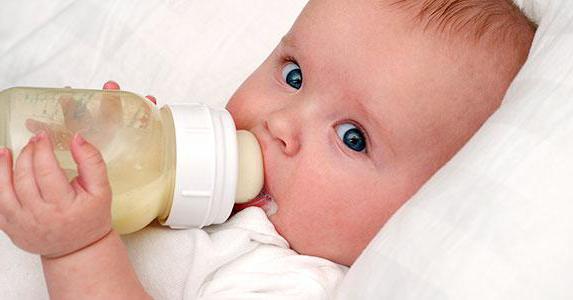The set of methods of influence by the state on the distribution of revenue is today called redistribution policy. These techniques are very diverse. It is interesting to note: they are characterized by changes in a wide range, which depends on the cultural, political, historical and other features of any particular state. The system of social transfers is one of the most effective ways of government influence on the distribution of income. It would be advisable to consider in more detail the presented category, as well as all aspects affecting the relevant topic.
Transfers and their structure

Under the transfers should be understood certain methods of implementing the state policy of redistribution. It is important to know that the internal structure of social transfers involves classification depending on the characteristics of a particular model of social policy. So, it consists of three enlarged elements, among which are the following items:
- Public assistance.
- Social insurance.
- Children's allowances.
"European" and "American" models
It is interesting to note that the main difference between the current models of state social policy is the interpretation of child benefits as an independent link in social transfers (we are talking about the "European" model) or as an integral element of public assistance (we are talking about the "American" model) . So, children's benefits in the first case are provided to absolutely all families that have children, and in the second - exclusively to those whose incomes are below the established level. It must be added that this boundary is determined by means of a special test.
You should be aware that in the social assistance system of the Russian Federation verification of the income level of potential recipients is not implemented. An exception to this is the housing compensation payments program, which was introduced in 1997 (Decree of the Government of the Russian Federation “On streamlining the system of payment for housing and utilities”). That is why in Russia the separation from the public assistance system of such social transfers, like children's allowances, can be revised when introducing for them a check of the income level of recipient families.
The concept of transfers and system elements

State social transfers (in other words, transfer payments) are a targeted operation that is redistributive in nature. It consists mainly in the transfer of resources in kind and in cash to non-profit and government agencies (charitable, religious, professional, etc.) to the population free of charge.
To date, it is advisable to include subsidies, scholarships, allowances, pensions, as well as other payments related to social security, to social transfers. Besides, form of social transfers free services that make up a portion of the total income of individuals may appear. In-kind, they include marketable products, as well as individual non-market and market services that are provided to certain households.
Tasks solved by the system
Today social transfer mechanism solves many problems that can be classified according to several groups:
- Providing the public with services endowed with social significance.
- Bridging the gap in material support for employed and unemployed members of society, as well as improving the living standards of various social groups of the population that are not involved in the labor process.
- Important is such social transfer functionas the organization of the necessary structure and quantity of reproduction of labor resources.
- Mitigating the negative effects of the external plan regarding the period of adaptation of the public to market conditions, among which - the growth of unemployment, poverty and poverty. It must be added that, in particular, the above provision applies to social dependents. It is their ability to adapt to market conditions, as a rule, that depend on the value social transfers.
additional information

Today, social transfers serve as an integral part of state policy in the social field. Thus, the current system of social transfers to the population is one of the most striking prerequisites for achieving social justice in modern society, the formation and further maintenance of stability in the political sphere.
Transfer Forms
Currently, transfers of a social orientation can be implemented in the form of social assistance (welfare); providing a set of social guarantees from the state, which includes social benefits for certain categories of the population (this phenomenon is called categorical social services); social insurance (state, compulsory and voluntary corporate).
Social help

As it turned out, one of the types of social transfers is social assistance (welfare), which includes a whole system of services and benefits provided by the state to socially vulnerable social groups based on verification of their need. Thus, low-income sectors of society, whose incomes are below the poverty line (living wage), can count on transfers of a social orientation. In addition, it would be advisable to include here those who have fallen into difficult life situations. One way or another, from the side of the state they are guaranteed material support provided that the income is checked for compliance with the minimum standard of living standards.
It is important to know!
Today through social transfers the redistribution of tax revenues received from taxpayers of the country to strictly defined segments of the population is carried out, due to which income inequality in the society is somehow reduced. Through the institution of transfers of a social orientation in the form of social assistance, the concept of guaranteed income (its minimum level) becomes reality. In a broad sense, social assistance includes various forms of charity of voluntary public importance in favor of socially unprotected groups of the population. It is provided by religious and other social structures, as well as trade unions.
Social guarantees and benefits

One more kind of social transfers are social guarantees. It should be noted that they include systems of services and benefits that are significant for society and in relation to all individuals, without regard to the means test and their labor contribution. At the same time, the distribution principle is implemented in one way or another in accordance with needs, subject to the consideration of the resource potential of the public, which reveals the measure of these guarantees.
Social transfers include also social benefits, which serve as social guarantees to specific social categories. It must be supplemented that they are universal.
Social insurance
Transfers that are implemented through the social insurance system exist to protect society from various kinds of social risks, which can lead to loss of income and disability due to illness, work-related injuries, accidents, occupational diseases, birth and further education of children, old age, unemployment, death of the breadwinner and so on. It should be noted that this category of transfers is characterized not only by redistribution, but also by preliminary accumulation of funds, including often personal ones, which form insurance funds for the subsequent payment of a certain amount of funds in case of urgency of the insured event.
Pensions, benefits and scholarships

It is important to know that the largest possible share of social transfers in Russia is scholarships, pensions and benefits. So, under a pension it is necessary to understand the form of regular cash payments stipulated by the current legislation, with full or partial incapacity for work, loss of a breadwinner or the risks of a professional plan. It should be noted that the formation of pension provision is carried out in a single social space, which includes a single procedure for the revision and calculation of pensions, the accumulation of insurance funds, as well as their payments in a single Pension Fund of extra-budgetary value. The pension conditions that apply in the territory of the Russian Federation are established and enshrined in the relevant federal law.
Under the allowance it is necessary to consider the form of payments of a cash nature, one-time or regular, in cases of full or partial disability, financial difficulties, death of relatives, support for families with children and in other cases provided for by applicable law. It should be noted that in the Russian legislation today provides benefits in connection with temporary disability, child and family benefits, unemployment benefits and so on.
A scholarship should be understood as a form of regular payments of a monetary plan to students of secondary specialized, higher educational institutions, as well as to students of educational institutions of a vocational-technical orientation who study with a separation from production.
The situation with social transfers in Russia

In the Russian Federation, the proportion of the population that is entitled to receive transfers of social significance is approximately 68 percent, which is almost one hundred million people who can apply for them (of course, they do). It should be added that a large number of benefits today are provided in accordance with the categorical principle. In other words, topical benefits apply to absolutely all persons who fall into this category, which does not depend on their financial situation.
In addition to direct payments of a monetary nature to the public, it is advisable to include financing of expenses of the current plan in education, healthcare, culture and so on as social transfers. This should also include subsidizing organizations and enterprises that provide services to socially unprotected segments of the population, for example, subsidies for public transport or payment of housing and communal services.
All forms of social transfers that exist today are often interchangeable or complement each other. For example, transfers to people with disabilities, as a rule, consist of cash payments that are different in terms of the nature, among which are funds allocated for the maintenance of the corresponding houses for people with disabilities (which are endowed with the status of state institutions and are financed on the basis of current cost standards or in the manner of reimbursing the expenditures for fact); provision for the purchase of medicines, prostheses,vehicles and so on (to encourage the use of labor by persons with disabilities and the production of specific marketable products that they need); funds for the payment of pensions and so on.